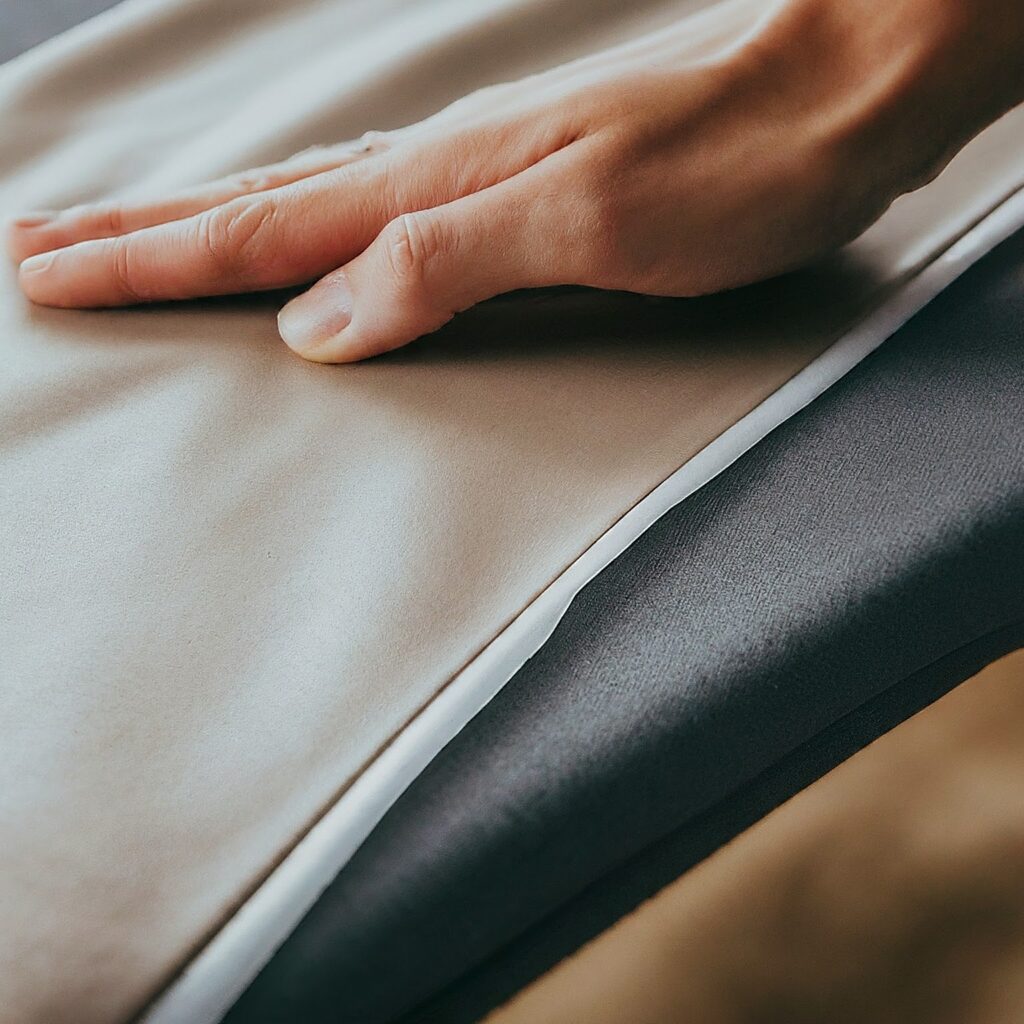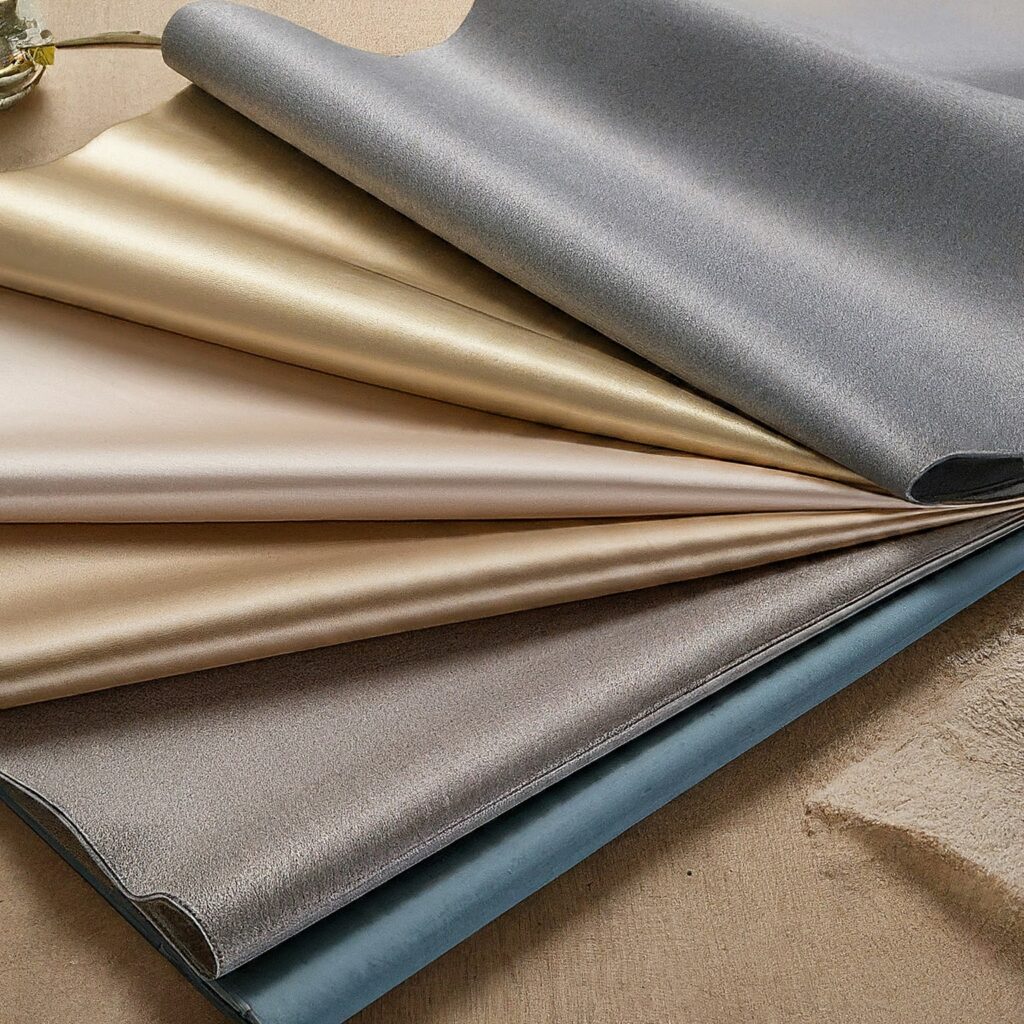Fusible vs. Sew-In Interlining: Which is Perfect for Your Sewing Project?
When it comes to selecting the right interlining fabric for your sewing projects, the choice often boils down to fusible interlining versus sew-in interlining. Each has its own set of advantages and specific applications, making it essential to understand which one suits your project best. In this comprehensive guide, we’ll explore the differences between fusible interlining and sew-in interlining, their benefits, and how to choose the right one for your needs.

Table of Contents
- What is Fusible Interlining?
- Key Differences Between Fusible and Sew-In Interlining
- When to Use Fusible Interlining and Sew-In Interlining
- Pros and Cons of Fusible Interlining and Sew-In Interlining
- How to Choose the Right Interlining Fabric for Your Project
- Conclusion
What is Fusible Interlining?
Interlining fabric is a hidden layer placed between the outer fabric and the lining of a garment. It adds structure, stability, and support, ensuring that the finished product looks polished and professional. But with various types of interlining fabric available, such as fusible interlining and sew-in interlining, selecting the right one can be a bit daunting.
Fusible interlining is a type of interlining fabric that comes with a heat-activated adhesive on one side. When you apply heat, typically using an iron, the adhesive melts and bonds the interlining fabric to the garment fabric. This creates a strong bond without the need for stitching, making it a popular choice for many sewing enthusiasts.
Key Differences Between Fusible and Sew-In Interlining
Understanding the key differences between fusible interlining and sew-in interlining can help you make an informed decision:
- Application: Fusible interlining is applied with heat, while sew-in interlining is attached with stitches.
- Bonding: Fusible interlining creates a strong, permanent bond, while sew-in interlining provides a softer, more flexible hold.
- Fabric Compatibility: Fusible interlining is not suitable for all fabrics, especially those sensitive to heat, whereas sew-in interlining can be used with any interlining fabric.
- Finish: Fusible interlining provides a crisp finish, while sew-in interlining offers a more natural drape.

When to Use Fusible Interlining and Sew-In Interlining
Fusible interlining is ideal for projects where you need a quick, easy application and a firm structure. Here’s when you should consider using it:
- Crisp collars and cuffs: Provides the stiffness needed for a polished look.
- Tailored garments: Adds structure to blazers, jackets, and coats.
- Quick projects: Saves time as it eliminates the need for stitching.
Sew-in interlining is best for projects that require a more flexible finish or involve delicate fabrics. Consider sew-in interlining for:
- Evening gowns and delicate fabrics: Provides support without risking fabric damage.
- Flowing garments: Offers a softer drape, ideal for dresses and skirts.
- Handmade or couture projects: Allows for precise placement and control.
Pros and Cons of Fusible Interlining and sew-in interlining
Pros:
- Ease of use: Simple to apply with an iron.
- Time-saving: No need for sewing, making it faster to work with.
- Wide availability: Comes in various weights and interlining types for different fabrics.
- Versatile: Works with all interlining types of fabrics, including delicate and heat-sensitive ones.
- Flexible finish: Offers a softer, more natural drape.
- Durable: Stitched in place, so it won’t shift or peel.

Cons:
- Heat sensitivity: Not suitable for all fabrics, particularly those that can’t withstand high heat.
- Stiffness: Can make the garment too stiff if not chosen carefully.
- Permanent bond: Once fused, it’s challenging to adjust or remove.
- Time-consuming: Requires additional time and effort to sew in place.
- Complexity: More challenging for beginners or quick projects.
- Bulk: Can add extra bulk to seams if not carefully managed.
How to Choose the Right Interlining Fabric for Your Project
Choosing between fusible interlining and sew-in interlining depends on several factors, including the fabric you’re using, the type of garment, and the desired finish. Here’s a quick guide to help you decide:
- Fabric Type: Use fusible interlining for fabrics that can withstand heat, and sew-in interlining for delicate or heat-sensitive fabrics.
- Garment Type: For structured garments like blazers, choose fusible interlining. For softer, flowing garments, opt for sew-in interlining.
- Experience Level: If you’re new to sewing, fusible interlining might be easier to work with. For more advanced projects, sew-in interlining offers greater control.
Conclusion
When it comes to choosing between fusible interlining and sew-in interlining, there’s no one-size-fits-all answer. It’s all about understanding your project’s needs, the fabric you’re working with, and the finish you want to achieve. Both fusible interlining and sew-in interlining offer unique benefits, so you can’t go wrong if you make your choice based on the specific requirements of your sewing project.
Remember, interlining fabric plays a crucial role in the overall quality and finish of your garment. Whether you choose fusible interlining for its ease and speed or sew-in interlining for its versatility and soft finish, you’ll be on your way to creating beautifully finished projects that look professional and polished.
Link of related Articles
- Fusing Interlining on Delicate Fabrics: Tips and Tricks
- Advantages of Fusible Interlinings: Benefits, Application & Tips
- Alternatives to Fusible Interlining

